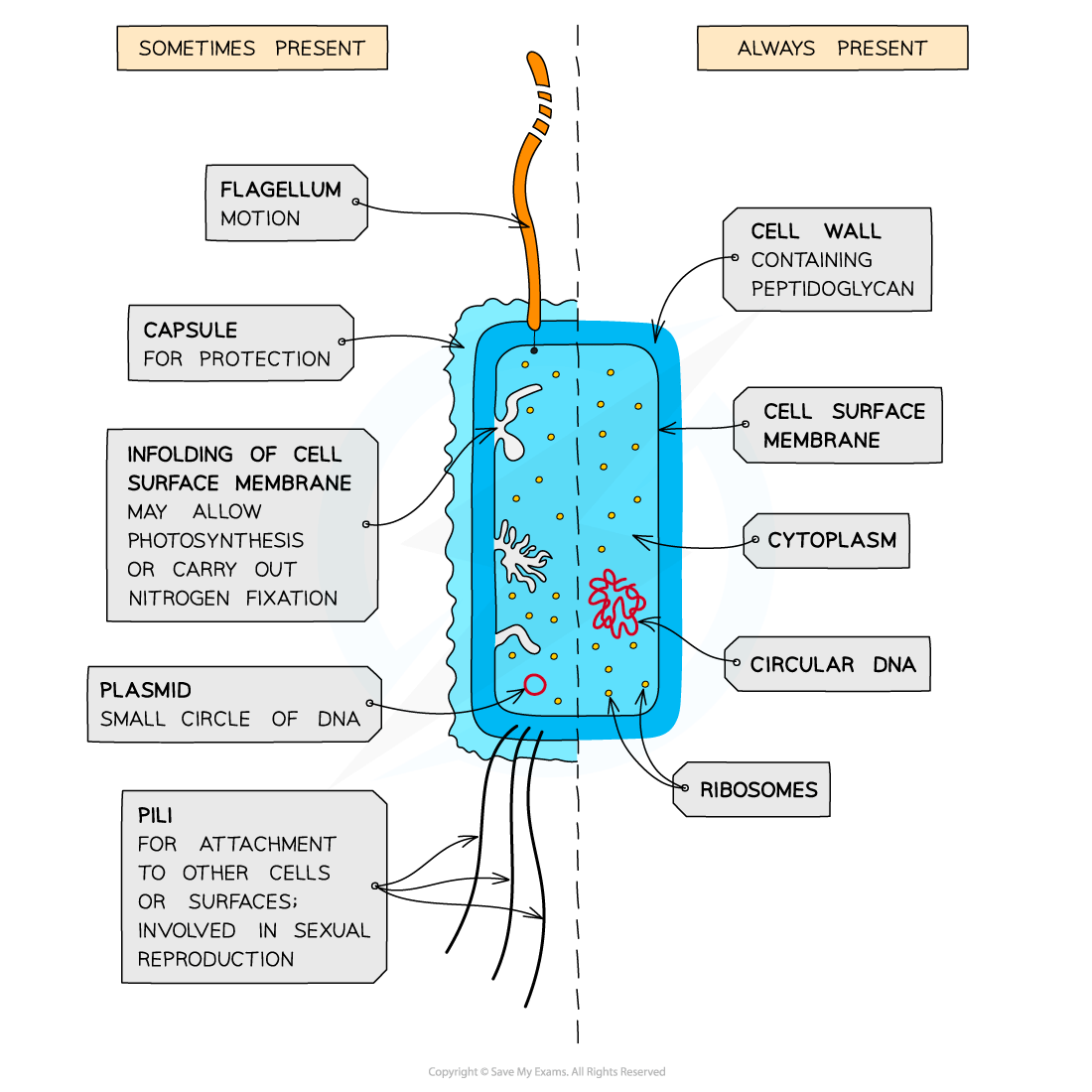Prokaryotic v Eukaryotic Cells (Cambridge (CIE) AS Biology): Revision Note
Exam code: 9700
Structural features of typical prokaryotic cells
Animal and plant cells are eukaryotic cells, whereas bacterial cells are prokaryotic
Prokaryotes have a cellular structure that is distinct from eukaryotes:
Their genetic material is free in the cytoplasm and is circular
Eukaryotic genetic material is packaged as linear chromosomes in the nucleus
Prokaryotes lack membrane-bound organelles
This means that they do not have any internal structures surrounded by membrane, e.g. a nucleus or mitochondria
They are many times smaller than eukaryotic cells
Prokaryotic cells are usually 1-5 μm in diameter, while eukaryotic plant cells can be 10-100 μm across
Their ribosomes are structurally smaller (70 S) in comparison to those found in eukaryotic cells (80 S)
Their cell walls are made of peptidoglycan rather than cellulose or chitin
Prokaryotes are always unicellular, while eukaryotic animal and plant cells can function together in multicellular organisms

Prokaryotic v eukaryotic cell structures
Feature | Prokaryotes | Eukaryotes |
|---|---|---|
Size | 0.5-5 μm | Up to 100 μm |
Genetic material | Circular chromosome in the cytoplasm Not associated with proteins | Linear chromosomes in the nucleus Associated with histone proteins |
Cell division | Binary fission No spindle fibres involved | Mitosis or meiosis Chromosomes are separated by spindle fibres |
Ribosomes | 70S | 80S |
Organelles | No membrane-bound organelles | Multiple membrane-bound organelles, e.g. a nucleus, mitochondria, chloroplasts |
Cell wall | Made of peptidoglycan | Made of cellulose in plants, or chitin in fungi |

Unlock more, it's free!
Did this page help you?